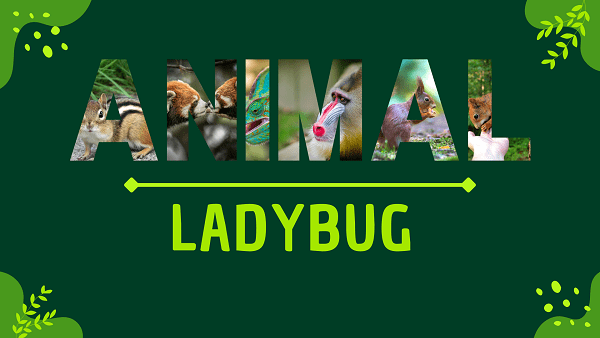Ladybug | Facts, Diet, Habitat & Pictures
Home » Animals » Ladybug | Facts, Diet, Habitat & Pictures
Ladybug Overview
Appearance
Ladybugs, also known as ladybirds or lady beetles, are small insects typically measuring 0.1 to 0.2 inches (3 to 6 millimeters) in length. They have a distinctive, nearly spherical shape with a convex, dome-like body. Ladybug often exhibit bright and striking colors, such as red or orange, adorned with black spots.
Their six short legs are well-suited for crawling and clinging to surfaces. Ladybugs possess a pair of delicate, translucent wings that are concealed beneath their colorful elytra (wing covers).
Origins And Evolution
Ladybugs, scientifically known as Coccinellidae, have an evolutionary history dating back millions of years. These small beetles belong to the family Coccinellidae and are part of the diverse order Coleoptera, which includes beetles. They evolved from ancestors with similar body shapes, gradually adapting to different environments and ecological niches.
Over time, ladybugs developed their iconic and vivid coloration, which serves as a warning to potential predators. Their protective elytra, or wing covers, conceal delicate wings, which they use for flight. Ladybugs have undergone speciation events, resulting in numerous species with varying colors, spot patterns, and ecological preferences.
Today, they are widely distributed worldwide, playing essential roles as predators of aphids and other garden pests. Their evolution continues to be a testament to their resilience and adaptability.
Behavior and Lifestyle
Ladybugs, or lady beetles, are generally beneficial insects popular for their voracious appetite for aphids and other garden pests. They are primarily herbivorous during their larval stages and shift to consuming aphids and other soft-bodied insects as adults.
Ladybugs are highly social, often congregating in groups during the winter months to hibernate. They’re popular for their distinctive and colorful appearance, which serves as a warning to potential predators of their unpalatability.
Ladybug Scientific Classification
- Kingdom: Animalia
- Phylum: Arthropoda
- Class: Insecta
- Order: Coleoptera
- Family: Coccinellidae
Ladybug Locations
- North America
- Europe
- Asia
- Africa
- Australia
- South America
- Central America
Fast Facts
- Name: Ladybug
- Scientific Name: Coccinellidae
- Habitat: Gardens, Fields
- Diet: Aphid Predator
- Physical Features: Rounded Elytra
- Nocturnal: Diurnal Insect
- Solitary: Individual Beetle
- Unique Order: Coleoptera Insects
- Lifespan: 1-2 Years
- Conservation Status: Beneficial Insect
- Fun Facts: Symbolizes Luck
Physical Characteristics
- Color: Red Shell
- Skin Type: Hard Exoskeleton
- Top Speed: Slow Crawler
- Lifespan: Short-lived Insect
- Weight: Lightweight Beetle
- Length: Tiny Bug
- Age of Sexual Maturity: Weeks Old
- Age of Weaning: No Weaning
Ladybug FAQs
What is a ladybug?
A ladybug, also known as a ladybird or lady beetle, is a small, colorful beetle known for its distinctive spotted appearance.
How many species of ladybugs are there?
There are thousands of species of ladybugs worldwide, each with its unique coloration and spot pattern.
Are ladybugs pests or beneficial insects?
Ladybugs are considered highly beneficial insects because they are natural predators of aphids and other garden pests.
Why are ladybugs called “ladybirds” or “lady beetles”?
The name “ladybug” likely originates from the Middle Ages when they were associated with the Virgin Mary. The name “ladybird” has a similar origin.
Related:
- Tarantula
- Mackerel
- Mackerel
- Sea Stars
- Bird
- Amphibians
- Vertebrates
- Sand Dollars
- Barnacles
- Scallop
- Brittle stars
- Tilapia
- Carp
- Krill
- Catfish
- Grouper
- Calm
- Yak
- Yucatan Brown Brocket
- White-tailed Deer
- Uakari
- Utahraptor (Dinosaur)
- Qinghai Lake Naked Carp
- Qilian Shrew
- Qinling Panda
- Qacha’s Nek long-fingered Frog
- Red Fox
- Red Panda
- Rockhopper Penguin
- Salamander
- Snail
- Storks


